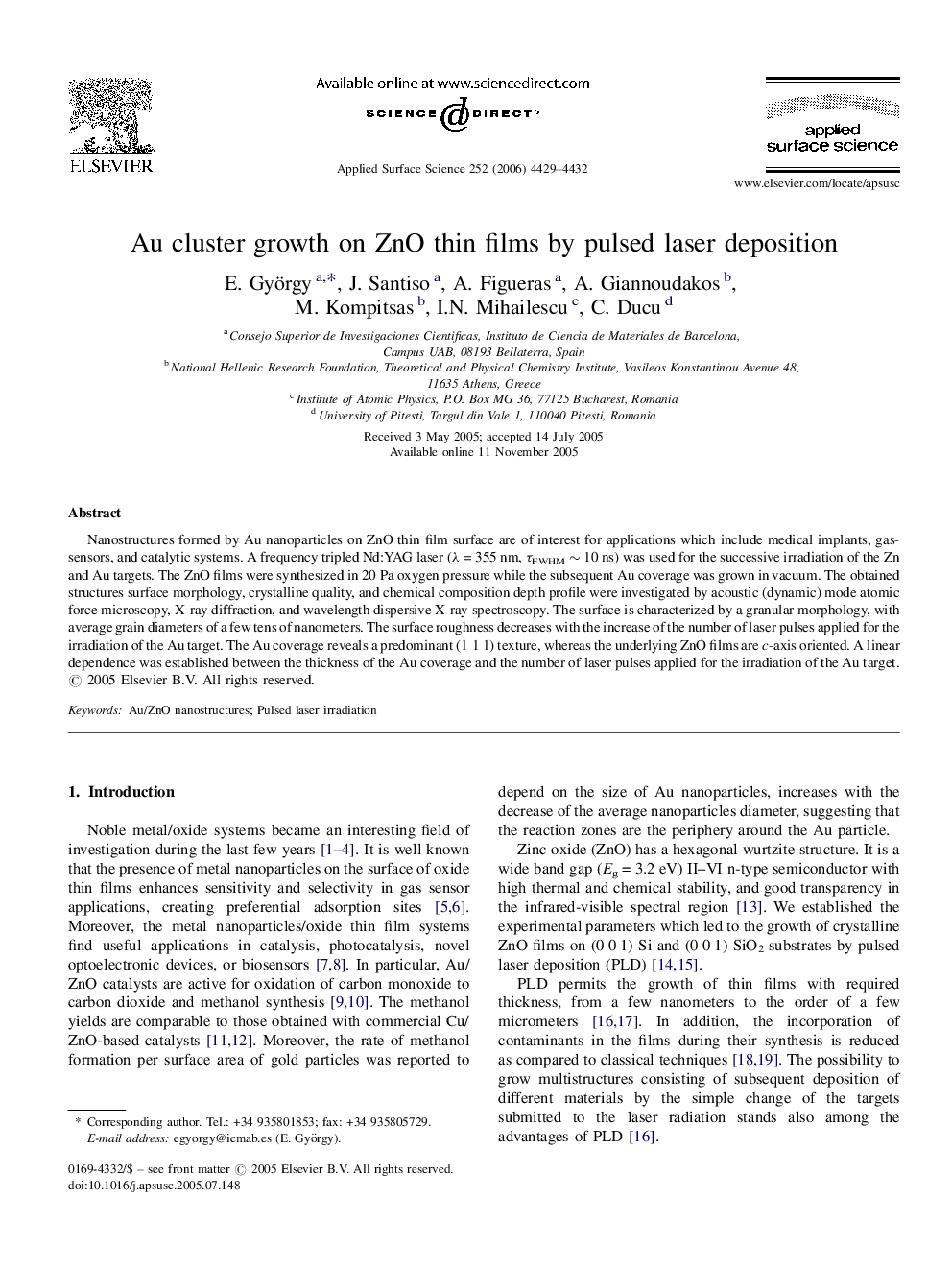| Article ID | Journal | Published Year | Pages | File Type |
|---|---|---|---|---|
| 5369215 | Applied Surface Science | 2006 | 4 Pages |
Nanostructures formed by Au nanoparticles on ZnO thin film surface are of interest for applications which include medical implants, gas-sensors, and catalytic systems. A frequency tripled Nd:YAG laser (λ = 355 nm, ÏFWHM â¼Â 10 ns) was used for the successive irradiation of the Zn and Au targets. The ZnO films were synthesized in 20 Pa oxygen pressure while the subsequent Au coverage was grown in vacuum. The obtained structures surface morphology, crystalline quality, and chemical composition depth profile were investigated by acoustic (dynamic) mode atomic force microscopy, X-ray diffraction, and wavelength dispersive X-ray spectroscopy. The surface is characterized by a granular morphology, with average grain diameters of a few tens of nanometers. The surface roughness decreases with the increase of the number of laser pulses applied for the irradiation of the Au target. The Au coverage reveals a predominant (1 1 1) texture, whereas the underlying ZnO films are c-axis oriented. A linear dependence was established between the thickness of the Au coverage and the number of laser pulses applied for the irradiation of the Au target.
